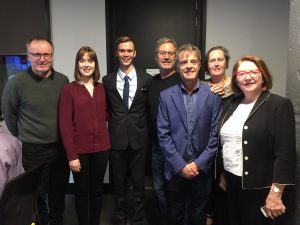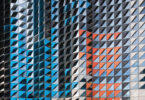Election 2019 Wrap Up from RMIT University
Election 2019 was a project of The Junction, part of the Journalism Education and Research Association of Australia. The broadcast was supported by the Judit…
RMIT hosted the largest national newsroom for Election 2019, a television program produced by the collaborative student publication The Junction, a project of the Journalism Education and Research Association of Australia.
Dozens of journalism and VET students in three of RMIT’s studios worked with others from 23 universities across Australia to produce work for Election 2019.
EP for the television project was Journalism Industry Fellow Phil Kafcaloudes, and he was supported by a team of RMIT journalism academics and VET staff including Tito Ambyo, Tom Fayle and Josie Vine.
 Journalism students covered original election stories for weeks before the polls opened and after they closed, all of which was published on City Journal and on the Australia/Pacific student journalism site, The Junction.
Journalism students covered original election stories for weeks before the polls opened and after they closed, all of which was published on City Journal and on the Australia/Pacific student journalism site, The Junction.
The project was made possible by funding from industry partner The Judith Neilson Institute for Journalism and Ideas (JNI).
The funding not only supported the live TV broadcast from RMIT on election night but also the creation of a series of educational videos distributed to universities across Australia, featuring Barrie Cassidy, Patricia Karvelas, Madeleine Morris, Sarah Jaensch, Ashlynne McGhee and Kyle Pope (Columbia Journalism Review).
JNI Board Member Mark Ryan said that the project was “a great way for us to support and connect with some of Australia’s most respected journalism educators and their students. It’s a creative and very practical exercise that will develop skills and build experience for young reporters”.
The Editor of The Junction Andrew Dodd has also said the project was a great success noting the cooperation of dozens of skilled academic staff across the country.
Associate Professor Dodd wrote that “the exercise has demonstrated the power of working together and pooling our reportage in order to build something much bigger than the sum of its many parts. It will now be archived and accessible as a repository of knowledge about this poll-defying federal election.”
The Junction’s Election 2019 coverage included:

- 23 universities across Australia
- Hundreds of election stories that were published on junctionjournalism.com (150 in just the last 10 days of the campaign)
- The Junction TV’s Election 2019 program broadcast for 3 hours (extended from 2)
- Journalism students provided 31 Live TV Crosses from 17 electorates
- There were 61 people working inside RMIT’s 3 live TV studios on election night
- Another 35 people were at RMIT working on ACE and other university websites
- Dozens of students in other university newsrooms joined in across Australia providing live website updates
- The TV program was broadcast in Victoria, South Australia and Western Australia on community TV
- It was also livestreamed on Facebook, The Junction website, and Central News (from UTS)
- The national community radio network also rebroadcast it
- We made hundreds of social media promotional posts across Australia
- Hundreds of students in participating universities watched the specially made political reporting videos in class or via livestream
- The project involved a collaboration between students from VET and HE sectors
- Academics worked collaboratively online and in person throughout Australia
- Technical students were paid for their work

Bachelor of Communication (Journalism) students Rachael Merritt and Jesse Burns were the RMIT faces of the program to be broadcast from the Media Precinct in the New Academic Street. They were supported by The Junction Editor Andrew Dodd, Industry Fellow and EP Phil Kafcaloudes, RMIT journalism program manager Alex Wake with the on-air panel of Paul Strangio, Mary Delahunty and Ari Balle-Bowness from Griffith University.







